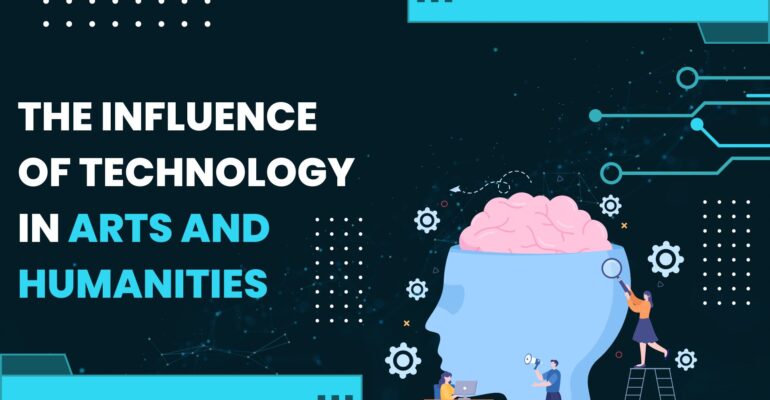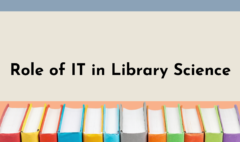The Influence of Technology in Arts and Humanities.
July 25, 2023 2023-07-31 6:14The Influence of Technology in Arts and Humanities.
The Influence of Technology in Arts and Humanities.
Introduction
In the digital age, technology has permeated every facet of our lives, revolutionizing the way we create, experience, and interpret art and humanities. From the world of visual arts to literary masterpieces, technology has become an indispensable tool for artists, scholars, and enthusiasts alike. The School of Arts & Humanities in Chhattisgarh at MATS University embraces this transformative impact of technology on the arts and humanities. In this blog, we will explore the multifaceted influence of technology in these disciplines and how it has redefined the boundaries of creativity and scholarship.
1. Technology-Driven Artistic Expression
Digital Art: Blurring the Lines
The advent of digital technology has given rise to an entirely new art form – digital art. Artists now harness the power of computers, software, and digital media to create breathtaking visual masterpieces. Digital art not only challenges traditional artistic techniques but also breaks free from physical constraints, allowing artists to experiment and explore uncharted territories of creativity.
Virtual Reality (VR) and Augmented Reality (AR)
VR and AR have revolutionized the way we experience art. With VR, one can step into a virtual gallery, walking amidst the great works of art, regardless of their physical location. AR, on the other hand, has brought artworks to life, adding interactive layers to static exhibits. These technologies have democratized access to art, making it more inclusive and immersive than ever before.
2. Preserving and Restoring Cultural Heritage
Digital Archiving: Safeguarding Our History
Technology has provided us with powerful tools to preserve and archive cultural heritage. Digitization of manuscripts, ancient texts, and historical artifacts ensures their longevity and accessibility to future generations. Moreover, 3D scanning and imaging techniques aid in documenting and preserving delicate artifacts that might be susceptible to wear and tear.
Restoration and Conservation
Advancements in technology have played a significant role in the restoration and conservation of artworks and historical landmarks. Techniques like laser scanning, 3D modeling, and nanotechnology help experts analyze and repair delicate artifacts with precision, reviving their original splendor for generations to come.
3. Digital Humanities: Bridging the Gap
Computational Analysis of Literature
Digital humanities have transformed the way we approach literary analysis. Through computational tools, scholars can now analyze vast amounts of text, uncover patterns, and gain deeper insights into the works of authors. This interdisciplinary approach has enriched literary criticism, bringing a new dimension to the study of language, culture, and society.
Interactive Storytelling and Gaming
Technology has opened up exciting avenues for interactive storytelling and immersive gaming experiences. Video games are no longer just recreational activities but have evolved into a form of narrative art. Gamification of historical events allows players to engage with and experience history first-hand, enhancing their understanding of the past.
4. Collaborative Learning and Global Connectivity
E-Learning and Online Courses
The integration of technology in arts and humanities education has democratized learning. E-learning platforms and online courses provide access to quality education for learners worldwide, transcending geographical boundaries. At School of Arts & Humanities in Chhattisgarh Students can now explore diverse cultural perspectives, collaborate with peers, and engage with renowned scholars from different parts of the globe.
Virtual Workshops and Conferences
Technology has facilitated virtual workshops, seminars, and conferences that foster collaboration and knowledge exchange among experts and enthusiasts. This global connectivity empowers artists and scholars to share ideas, research findings, and innovations, thereby enriching the discourse within the arts and humanities community.
5. Ethical Concerns and Challenges

Copyright and Intellectual Property
The digital age has brought about new challenges regarding copyright and intellectual property. With easy access to digital content, artists and authors face issues of plagiarism and unauthorized use of their work. Striking a balance between openness and protection remains an ongoing concern.
Data Privacy and Security
Digital humanities rely heavily on data analysis and storage. As we embrace technology in research and education, safeguarding personal information and sensitive data becomes paramount. Universities and researchers must prioritize data privacy and implement robust security measures.
Conclusion
The influence of technology on arts and humanities has been transformative, redefining the way we create, experience, and interpret these disciplines. From the emergence of digital art to the preservation of cultural heritage, technology has enriched our understanding of human creativity and history. As the School of Arts & Humanities in Chhattisgarh at MATS University continues to embrace technological advancements, it will undoubtedly nurture a generation of artists, scholars, and visionaries capable of shaping a future where art and humanities thrive alongside cutting-edge innovation. Embracing technology while addressing its ethical implications is the key to unlocking the full potential of this dynamic and evolving tapestry.









